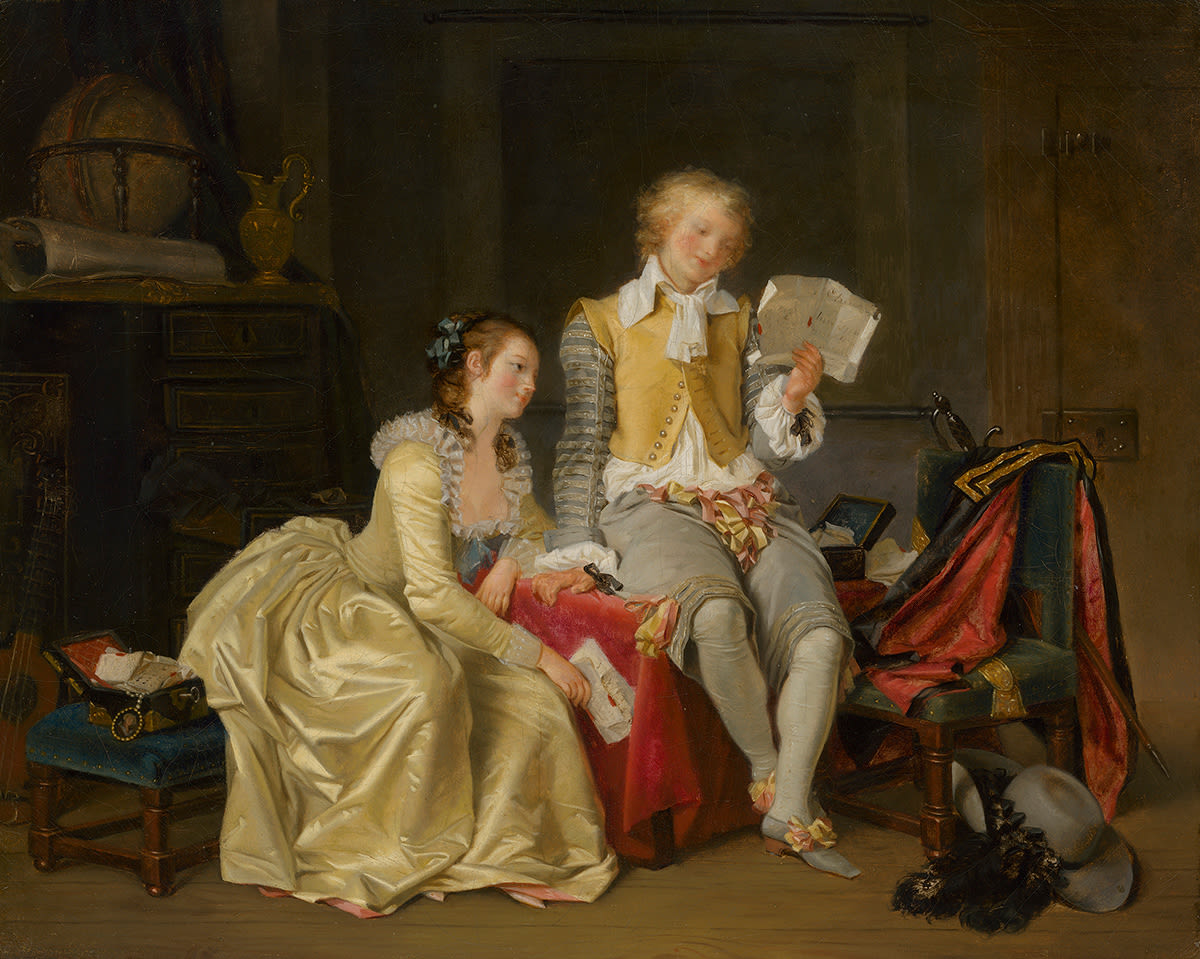Among the many reusages of paper in early modern Europe was certainly rereading letters. A short thread - using a 1780s painting from Marguerite Gérard - for those interested in #paperhistory and #bookhistory:
Step 1.

Step 1.


Let's start the look at rereading (and paper storing) practices of rich Europeans with details on the painting used. You see Marguerite Gérard's painting from c. 1785, nowadays in the Bayerische Staatsgemäldesammlungen - Neue Pinakothek München, sammlung.pinakothek.de/de/artwork/ApL…
Step 2.
Step 2.

Important paper letters were stored in tiny boxes - for rereading aloud and silently, alone and in company.
Step 3.

Step 3.


The letter itself was folded for the transport, as you may know from @letterlocking. Distributing your paper letter within the early modern postal services from A (writer) to B (reader) was a business that included folding and sealing skills - and opening skills.
Step 4.

Step 4.


Rereading was an established and common paper practices in early modern Europe: the bible, catechism books, almanacs, journals, ABC school books, scientific books, etc. etc. Basically, it was as much rereading as reading new stuff like newspapers. Rereading ruled.
Step 5.
Step 5.

Bonus detail for the #paperhistory crew: the globe in the back was made of paper too.
Step 6
https://twitter.com/dbellingradt/status/1455912823746404352?s=20
Step 6

In early modern Europe reading and writing letters was partly commercially motivated but often a private matter. Whatever the purpose, the paper transport relied always on postal and messenger services operating transregionally in Europe.
Step 7.
https://twitter.com/dbellingradt/status/1230036369457786881?s=20
Step 7.
The history of early modern reading is also a history of rereading, a history of storing papers and ideas, a history of the material conditions of writing, reading, transporting and reusing papers. A newly accentuated #PaperHistory is connecting these fields.
Step 8. Goodbye
Step 8. Goodbye

• • •
Missing some Tweet in this thread? You can try to
force a refresh























